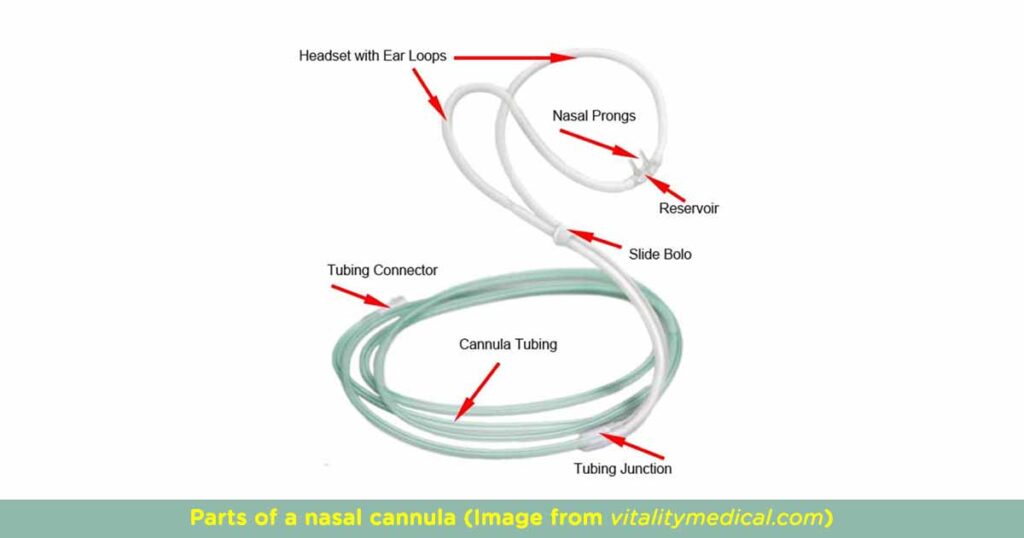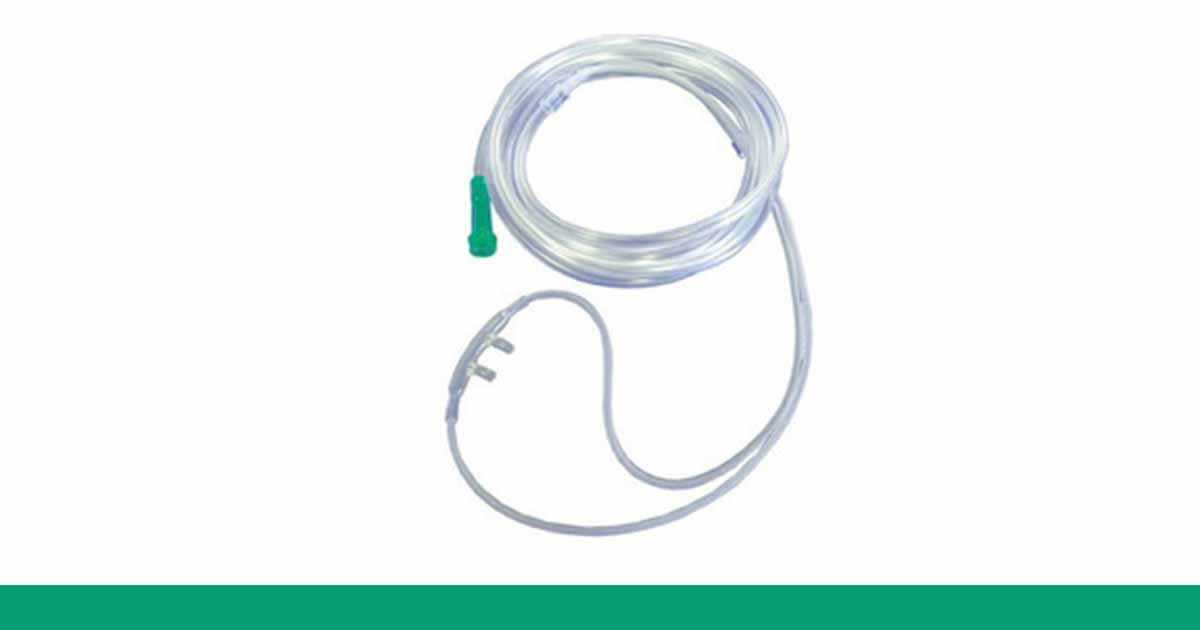A nasal cannula is a device used to deliver supplemental oxygen and increased air flow in patients with respiratory need. In this post, we will differentiate nasal cannula vs nasal prong.
The nasal prong may be short, lying 1 to 2 cm inside the nose, or long, with the tip in the nasopharynx. It can be single or binasal. The Length and diameter of the prongs helps to determine how the nasal cannula transmit the pressure to the airways.
The nasal prong can be smaller when used for infant or neonates.
A disadvantage of the nasal prong is the ability to cause trauma to the nose. The trauma may be mild symptoms such as edema or erythema, or severe side effects like nasal snubbing, flaring of the nostrils, columella necrosis, and nasal deformity.
To reduce the contact trauma occurring between the nose and nasal prong, lubricating the nares with antibiotic ointments, steroid ointments and creams, and Ayr gel has been considered.
Differences between Nasal Cannula vs Nasal Prong
In our previous post, we explained the different types and uses of nasal cannula in the clinical setting. Here we will explain whether it differs from the nasal cannula.
The main difference between the nasal prong and nasal cannula is that the nasal prong is a part of the device, while the nasal cannula is the whole device. The cannula has either two curved, straight or flared nasal prongs located at one end.
The nasal prong is placed inside the nostril of the patient, while the opposite end of the tubing will connect to an oxygen source. The oxygen source which may be an oxygen tank or oxygen concentrator will deliver either low flow oxygen or high flow oxygen to the patient depending on the need.

In nasal prong ventilation, a septate design delivers O2 (2-4 L/minute) through one nostril while aspirating gas for CO2 (capnometry) through the other. This allows for assessment of respiration during the ventilation.
It is important to note that you should administer oxygen through the face mask or nasal prongs in a child if the child has an oxygen saturation less than 92% in room air.
References:
- https://www.megamedical.com.au/oxygen-face-masks-vs-nasal-cannula-all-you-need-to-know/
- https://www.sciencedirect.com/topics/nursing-and-health-professions/nasal-prong












